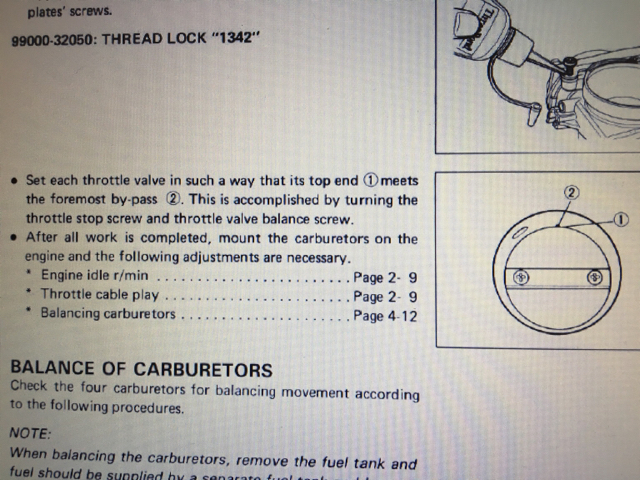1sttimer
Over 1,000 Posts
I'll try to give as much background as I can here. Picked up this bike - 1992 GSF400 with a stage 1 jet kit. Fat spark on all 4 cylinders, and just cleaned the heck out of the carbs. I also replaced the pilot air jets and the pilot fuel jets because the heads we buggered.
So, here's what I'm dealing with:
Cleaned carbs (didn't disassemble bank)
New pilot and pilot air jets
Nice spark on all 4
Pilot screw turned 3 out to Dynojet spec
I got it fired up for the first time tonight and was surprised when it ramped right up to 9k RPM. I had the choke on so I backed it off and the RPMs dropped to about 5k and held there. That's where the video below pics up.
I tried both with airbox on and off without much change.
Symptoms:
Opening throttle actually drops the RPMs to about 2500
Opening choke (enrichener) actually brings RPMs back up to crazy high.
Video doesn't show this, but the diaphragm slides were chattering really bad. Tried to get this in the video but you can hear its impact more than see it.
Wasn't really smoking except for right when I cranked it up. Smelled like steam actually, maybe from water in the pipe or something? Cleared up after that.
Bike only has 3k miles on it.
Here's a video to show what I'm dealing with. I'm really baffled that opening the throttle drops RPM. I'll pull the plugs tomorrow to see what I find. Any ideas?
http://youtu.be/tAV4Dv5HFVU
Sent from my iPhone using Tapatalk
So, here's what I'm dealing with:
Cleaned carbs (didn't disassemble bank)
New pilot and pilot air jets
Nice spark on all 4
Pilot screw turned 3 out to Dynojet spec
I got it fired up for the first time tonight and was surprised when it ramped right up to 9k RPM. I had the choke on so I backed it off and the RPMs dropped to about 5k and held there. That's where the video below pics up.
I tried both with airbox on and off without much change.
Symptoms:
Opening throttle actually drops the RPMs to about 2500
Opening choke (enrichener) actually brings RPMs back up to crazy high.
Video doesn't show this, but the diaphragm slides were chattering really bad. Tried to get this in the video but you can hear its impact more than see it.
Wasn't really smoking except for right when I cranked it up. Smelled like steam actually, maybe from water in the pipe or something? Cleared up after that.
Bike only has 3k miles on it.
Here's a video to show what I'm dealing with. I'm really baffled that opening the throttle drops RPM. I'll pull the plugs tomorrow to see what I find. Any ideas?
http://youtu.be/tAV4Dv5HFVU
Sent from my iPhone using Tapatalk






